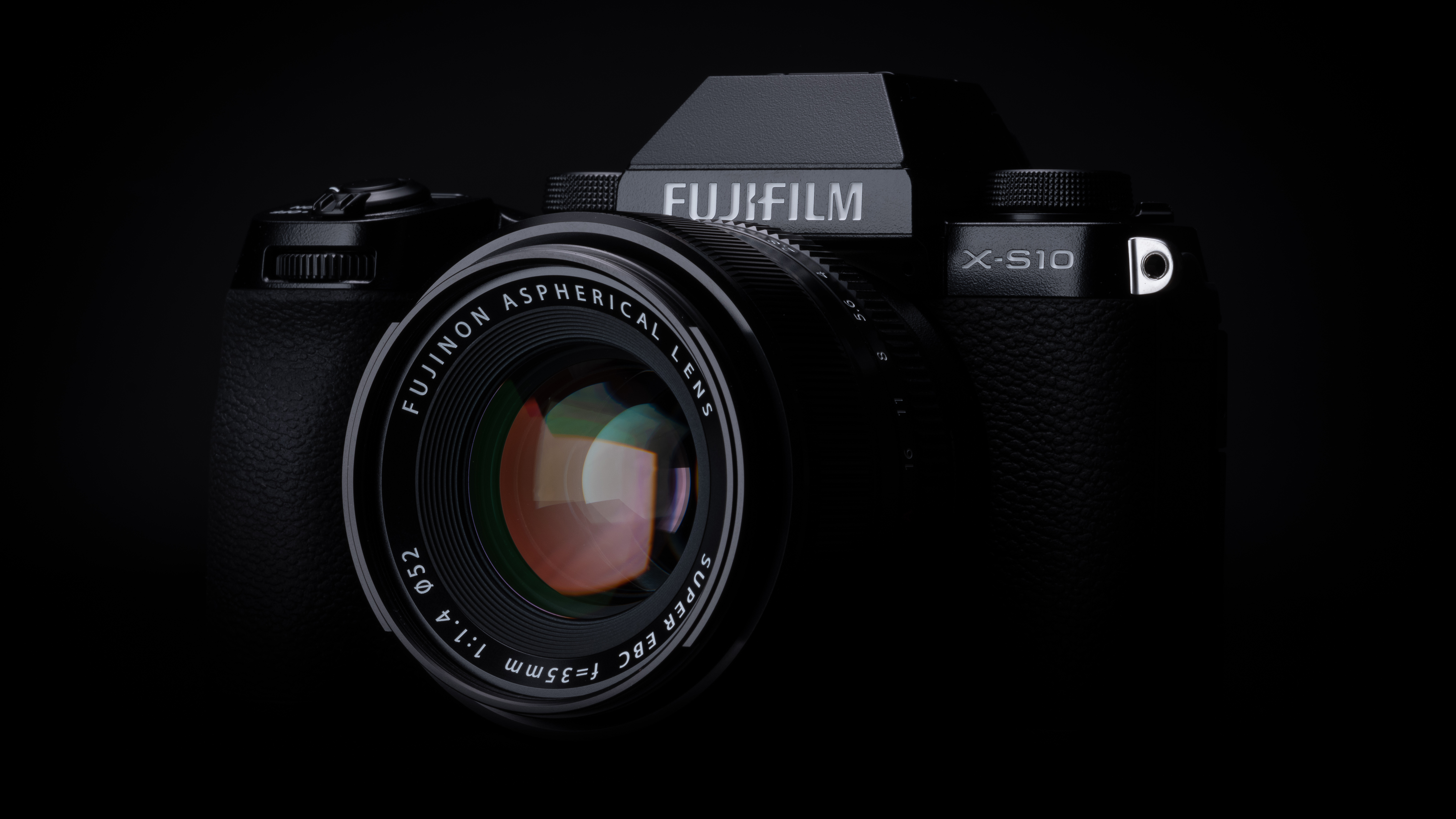The Fujifilm X-S10 is a mini Fujifilm X-T4 with a very tempting price tag
Could this be the ultimate small mirrorless hybrid camera?

The Fujifilm X-S10 has officially emerged through a mist of rumors and dry ice – and the compact mid-range mirrorless camera is everything we'd hoped the Canon EOS M50 Mark II was going to be. (Want to jump straight to our early verdict? Check out our hands-on Fujifilm X-S10 review).
While Canon appears to have given up on its smaller APS-C mirrorless cameras, if that minor update to the M50 is anything to go by, Fujifilm is going all guns blazing in the opposite direction with the X-S10.
Like a mini version of the Fujifilm X-T4, which we recently crowned as our best camera of 2020, the X-S10 combines that camera's sensor and processor with a smaller version of its in-body image stabilization (IBIS) system. The result is a camera that is, on paper, one of the best hybrids in its weight class.
The Fujifilm X-S10's IBIS system, which helps smooth out handheld judder in video and stills, is apparently 30% smaller than the system in the X-T4's, but has a claimed performance that isn't too far behind. For 20 out of the 30 lenses available for Fujifilm's X-series cameras, it will apparently give you six stops of compensation, which is only around half a stop less than the X-T4's equivalent performance.
The combination of a 26.1MP X-Trans CMOS 4 sensor and X-Processor 4 also promise to deliver similar image quality and autofocus performance to the X-T4. The X-S10 has Face and Eye AF, along with Tracking AF for moving subjects.
The X-S10, which won't be replacing the similar Fujifilm X-T30, does fall slightly behind the X-T4 in a couple of areas. Its burst shooting tops out at 8fps with the mechanical shutter (or 30fps with the electronic one), while video recording is limited to 4K/30p (in 8-bit 4:2:0) internally.
But those specs are certainly still competitive with other cameras in its sub-500g weight category like the Nikon Z50, and the X-S10 does also give you the option of outputting 4K/30p 4:2:2 10-bit video to an external recorder via its micro HDMI port, making it a little powerhouse in that department.
Sign up for breaking news, reviews, opinion, top tech deals, and more.
- These are the best mirrorless cameras you can buy right now
- Read our hands-on Fujifilm X-S10 review
- Or check out our guide to the best beginner cameras



A new kind of Fuji?
So why is the X-S10 the start of a new line of Fujifilm cameras, rather than a direct successor to the Fujifilm X-T30? The answer lies a lot in its design and controls, which are something of a departure for an X-series camera.
Firstly, the X-S10 has a large, deep grip. So far, only the Fujifilm X-H1 has had anything like that, and that's a far bigger camera. But look closely as the X-S10's top plate and you'll see it adopts the 'PASM' (Program, Aperture, Shutter Speed, Manual) control system. This is popular on other cameras, but is quite a change from Fujifilm's usual triplet of dials for shutter speed, ISO and exposure compensation.
Fujifilm says the reason for this change is that many photographers, particularly those coming from DSLRs, have been put off from switching to X-series cameras because they found its dials too complicated. So while the X-S10 might gain some new fans, it might also put off diehard Fujifilm traditionalists.
Another couple of factors that may deter the latter are the Fujifilm X-S10's screen, which is a vari-angle monitor that's useful for video but less revered by stills photographers, and its lack of weather-proofing.
Still, there's very little to complain about when it comes to price. The Fujifilm X-S10 will be available from mid-November for a body-only price of $999.95 / £949 / AU$1,749. Considering it offers IBIS among other treats, that's a little lower than we were expecting.
You'll also be able to buy the X-S10 with various lenses. A bundle with the cheaper XC15-45mmF3.5-5.6 OIS PZ kit lens will cost £999 (around $1295 / AU$1825), while a combination with the better XF18-55mmF2.8-4 R kit lens will cost $1,399.95 / £1,299 (about AU$2375). If you want even more flexibility, you'll also be able to buy the X-S10 with the newer XF16-80mmF4 R OIS WR for $1,499.95 / £1,399 (AU$2560). Australian prices for the kits are yet to be confirmed.
- These are the best cameras you can buy right now

Mark is TechRadar's Senior news editor. Having worked in tech journalism for a ludicrous 17 years, Mark is now attempting to break the world record for the number of camera bags hoarded by one person. He was previously Cameras Editor at both TechRadar and Trusted Reviews, Acting editor on Stuff.tv, as well as Features editor and Reviews editor on Stuff magazine. As a freelancer, he's contributed to titles including The Sunday Times, FourFourTwo and Arena. And in a former life, he also won The Daily Telegraph's Young Sportswriter of the Year. But that was before he discovered the strange joys of getting up at 4am for a photo shoot in London's Square Mile.